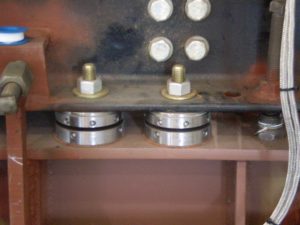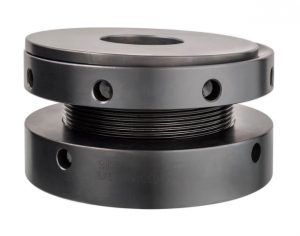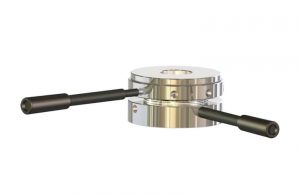We have written, here on the VibrAlign blog, about adjustable chocks used in place of shims for vertical adjustment and machine support.

A recent experience at a customer site prompted this article, to share a simple tip that could save valuable time and effort. The customer was using vertical jack bolts while viewing live alignment values to guide the vertical alignment correction, and subsequently adjusting the chocks to the position achieved with the vertical jack bolts.
The issues this technique causes are that the machine can move unexpectedly when only supported by small diameter jacking bolts. This happened to be a large motor, which is typical of machinery where chocks are used. It is difficult to raise both sides of the motor the same amount by attempting to turn two jack bolts at the same rate. The result is several attempts to get it right, and lots of bolt torqueing that could be eliminated with a single known adjustment.
The solution is so simple; you just have to know how many thousands (mils) of travel per full turn of the chock. Chocks have tooling holes on the sides to insert a wrench or other tool to assist in the adjustment.


These tool marks are spaced evenly. In this case, no data was available on the mils of travel per turn of the chock. So, we took out the calipers and measured it – 80 mils per full turn. There were 8 marks on the side, so we have 10 mils adjustment per mark.
Once you know these numbers, the process is simple. The jack bolts are still required for lift assistance, as the weight of the machine on the chocks will make it impossible to adjust the chocks without first taking the load off. Once you have your alignment data (after all pre-alignment steps are complete):
Step one, lift both front, or both rear feet off the chocks.
Step two, adjust both chocks by the measured amount. In my example, we lowered the front feet by 20 mils, which is two marks on the chocks.
Step three, after vertical adjustments are made at the front and rear, lower the motor onto the chocks and move on to the horizontal adjustment before tightening the hold down bolts.
If unexpected movement occurs when torqueing the bolts, recheck soft foot – this process introduces the possibility of causing soft foot by accidentally adjusting one side’s chock more than the other.
We could not readily find data in the chock specifications on mils per turn of adjustment, and there are other chock types that use a ramp type adjustment rather than a threaded design. Therefore, this author believes the best practice will always be to begin the alignment with a measurement of chock travel. Think of it like measuring actual shim thickness, a good mic should be part of every alignment toolbox.
Save Time. Save Money. Save the Machine.




2 Comments
Couldn’t you use Threads per inch and number holes, also?
Yes you certainly could, if that information is available to you.